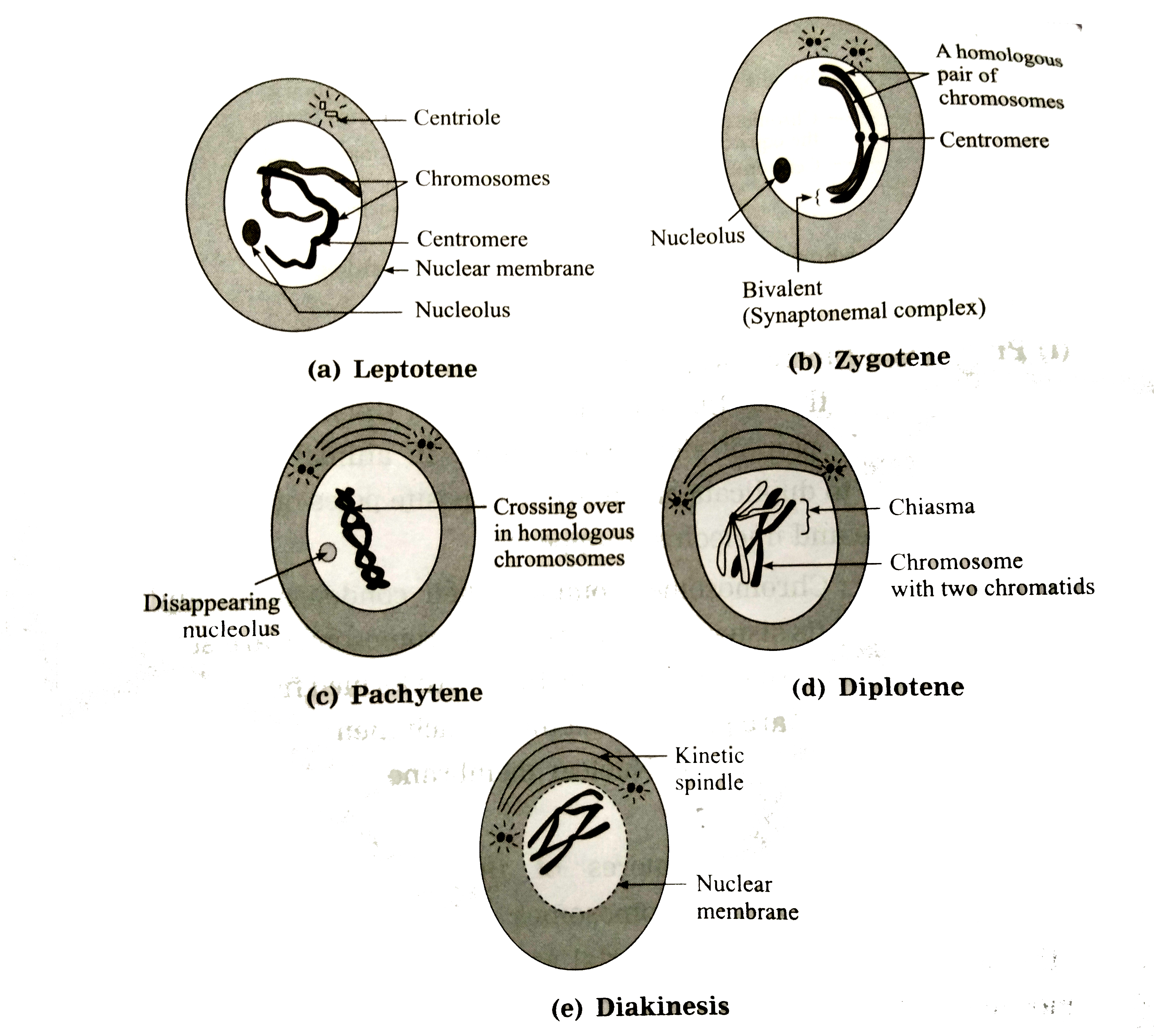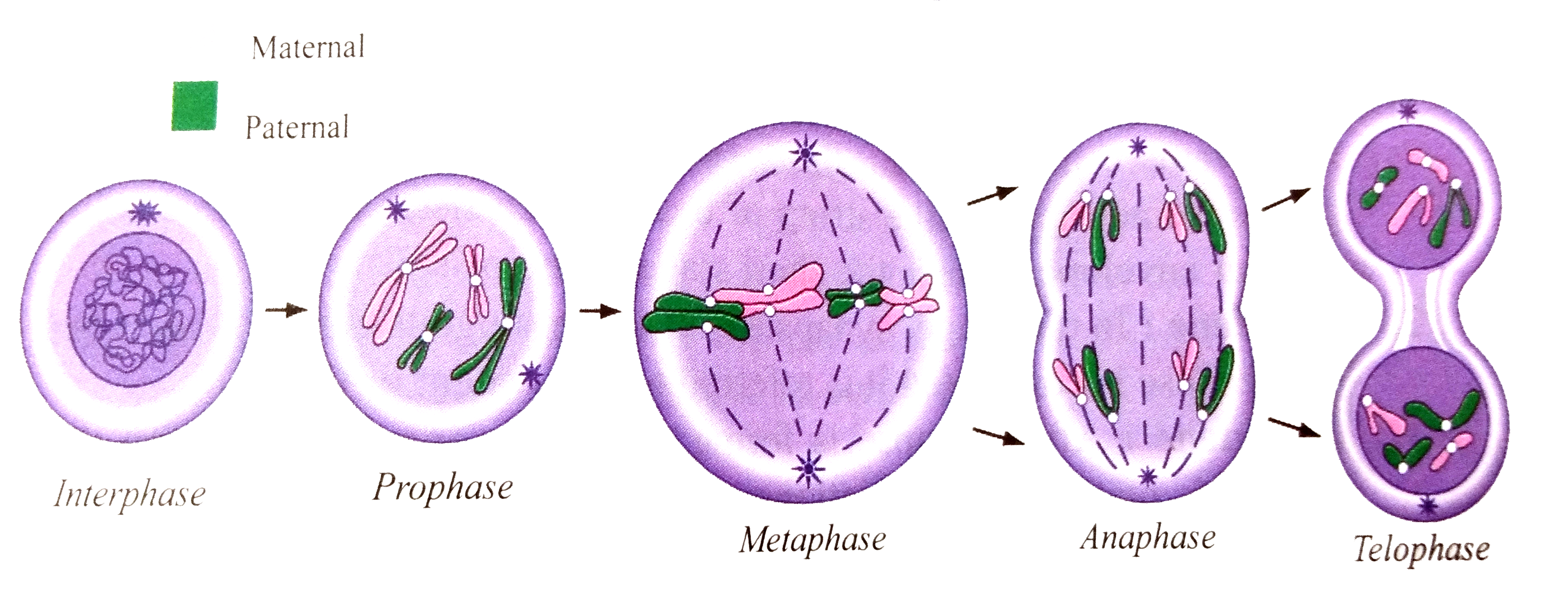Which the help of suitable diagrams, explain the five stages of prophase -I of meiosis.
Text Solution

Prophase -I: Prophase-I of meiosis is much longer phase of the meiosis.
It is subdivided into 5 substages, namely leptotene, zygotene, pachytene, diplotene, and diakinesis.
1. Leptotene: Initially the chromosomes start condensation and they become compact during leptotene.
2. Zygotene: In zytogene, homologous chromosomes start pairing. This pairing is called synapsis. The structure called synaptonemal bivalent or tetrad.
3. Pachytene: During pachytene stage, crossing over of non-sister chromatids of homologous chromosomes takes place. Genetic recombination is produced dur to such exchange. The homologous chromosomes still remain paired together at the sites of crossing over.
4. Diplotene: During diplotene, synaptonemal complex disolves and the homologous chromosomes o the bivalents separate except at teh point of crossin over. Thus, it looks like K-shaped structures called the chiasmata.
5. Diakinesis: The last phase of prophase is for termination oif chiasmataa. The spindle fibres originate, and the cross over homologous chromosomes are noe separated. The nucleolus disappears, and the nuclear envelope breaks down.
|
Topper's Solved these Questions
- SKETCHING, EXPLANATION, CORRECTION OF DIAGRAMSBOOK - NAVNEET PUBLICATION - MAHARASHTRA BOARDCHAPTER - SKETCHING, EXPLANATION, CORRECTION OF DIAGRAMSEXERCISE - SKETCH AND LABEL THE GIVEN DIAGRAMS:
3 Videos
- SKETCHING, EXPLANATION, CORRECTION OF DIAGRAMSBOOK - NAVNEET PUBLICATION - MAHARASHTRA BOARDCHAPTER - SKETCHING, EXPLANATION, CORRECTION OF DIAGRAMSEXERCISE - Observe the above figure and answer the questions below:
5 Videos
- SHORT NOTES BOOK - NAVNEET PUBLICATION - MAHARASHTRA BOARDCHAPTER - SHORT NOTES EXERCISE - Carbon compounds
4 Videos
- SOCIAL HEALTHBOOK - NAVNEET PUBLICATION - MAHARASHTRA BOARDCHAPTER - SOCIAL HEALTHEXERCISE - MCQ based on project :
3 Videos
Similar Questions
Knowledge Check
The correct sequence of prophase–I of meiosis is :–
ALeptotene, pachytene, zygotene, diplotene, diakinesisBLeptotene, diplotene, pachytene, zygotene, diakinesisCLeptotene, zygotene, pachytene, diplotene, diakinesisDLeptotene, zygotene, diakinesis, diplotene
With the help of suitable diagram,explain the five stages of prophase-I of meiosis.
View SolutionWith the help of suitable diagrams, explain mitosis in detail.
View SolutionWith the help of suitable diagrams, explain the mitosis in detail.

View SolutionWith the help of suitable diagrams explain the mitosis in detail.
View SolutionName the sub-phases of prophase-I of Meiosis.
View SolutionDraw a well labelled diagram showing the stages of the prophase -I of meiosis-I
View SolutionWhat is not the incorrect sequence of prophase I of meiosis ?
View Solution
